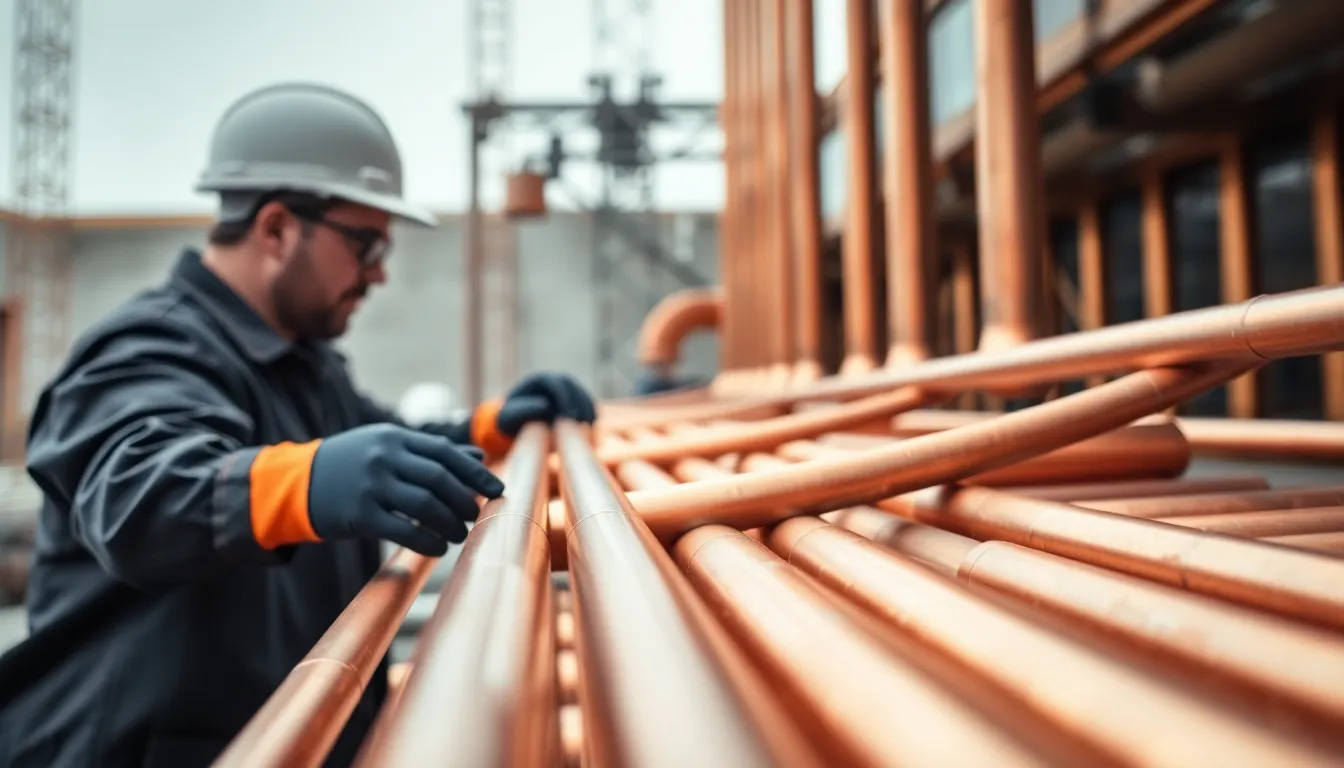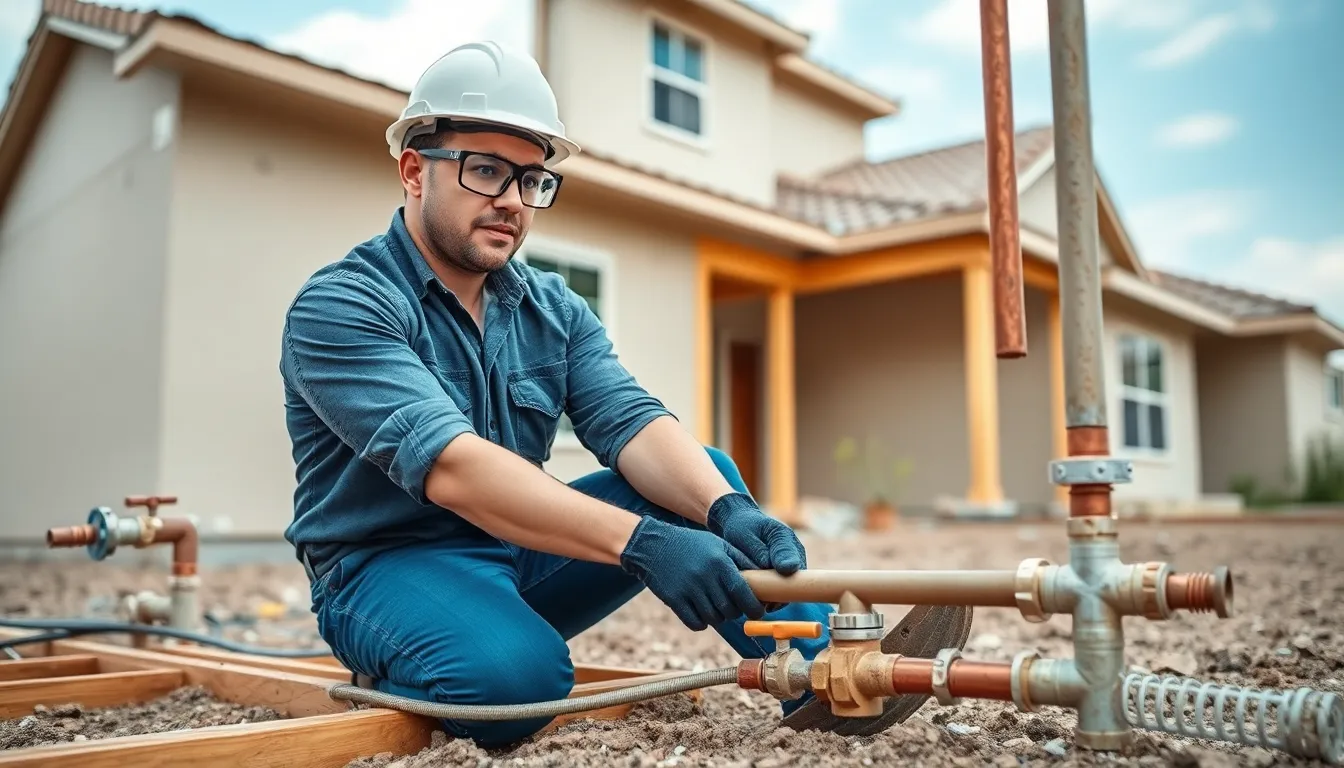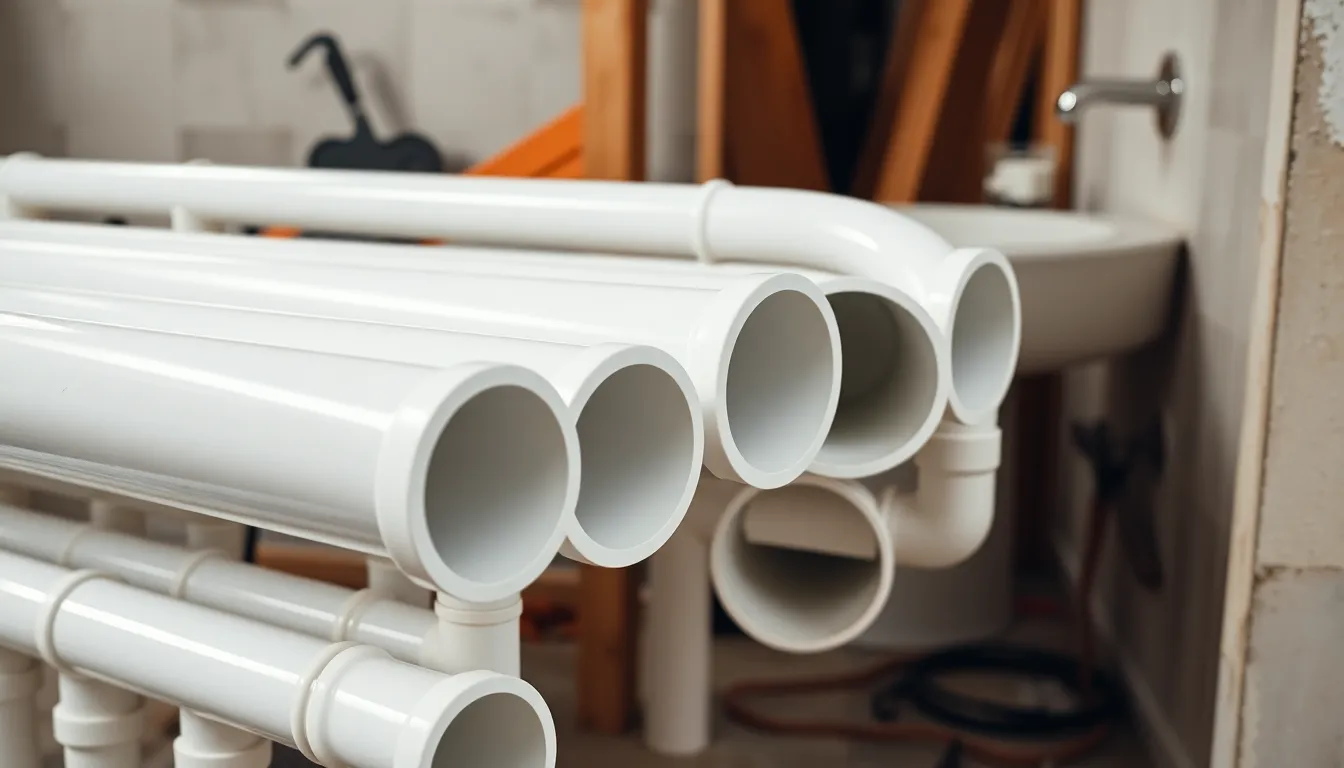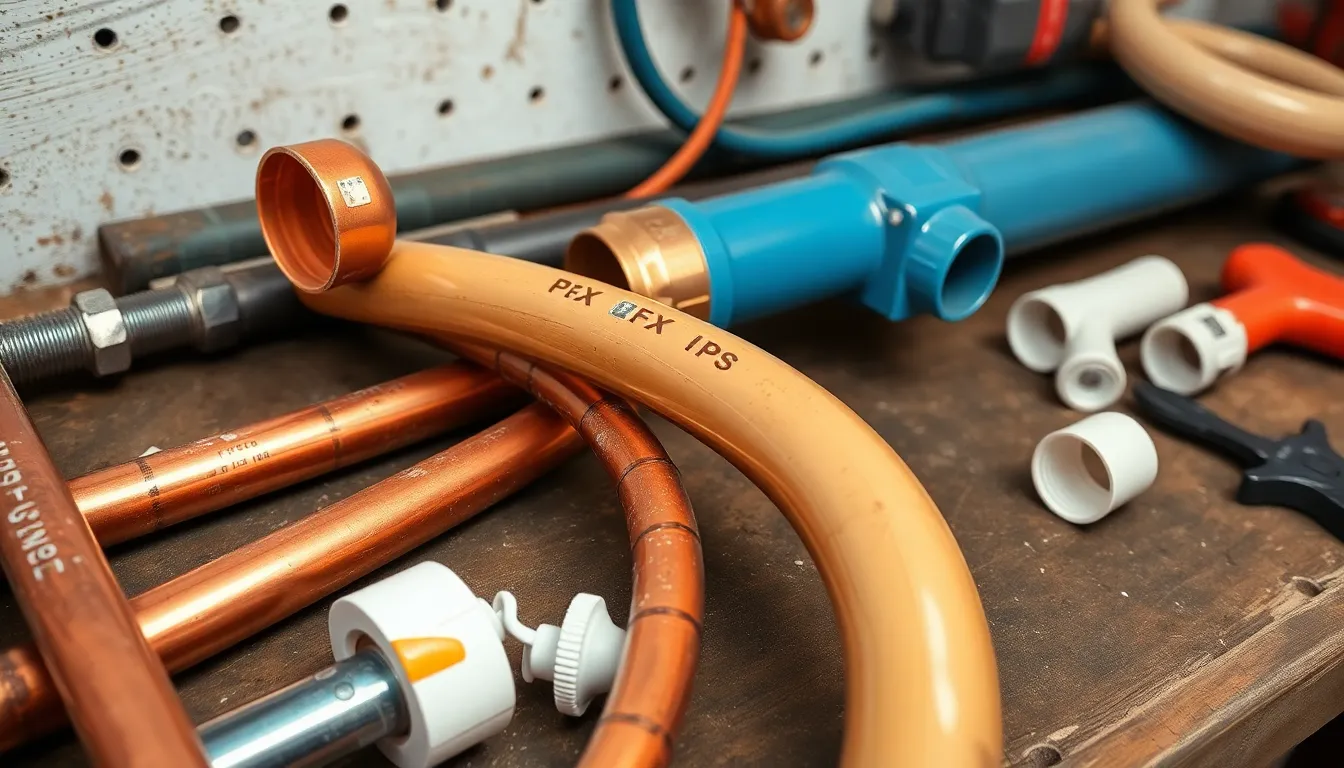Choosing the right pipe material for a remodel can feel overwhelming, especially with options like copper, PEX, and PVC on the table. Each material brings its own unique advantages and challenges, making the decision crucial for both functionality and budget. Imagine the frustration of dealing with leaks or corrosion just months after a renovation; it’s a nightmare every homeowner wants to avoid.
As the plumbing landscape evolves, understanding these materials is more important than ever. This article dives into the pros and cons of copper, PEX, and PVC, offering fresh insights and practical advice for homeowners, property managers, and DIY enthusiasts alike. Whether you’re planning a major overhaul or a simple upgrade, knowing the strengths of each option will help ensure your project stands the test of time.
Overview of Pipe Materials
Choosing the right pipe material for remodels involves understanding the unique characteristics of copper, PEX, and PVC. Each material offers distinct benefits and potential drawbacks.
Copper
Copper pipes are known for their durability and long lifespan, typically lasting over 50 years. They resist corrosion and are ideal for both hot and cold water applications. Copper’s high thermal conductivity makes it efficient for hot water delivery. However, their high cost and complex installation may deter some homeowners.
PEX
PEX (cross-linked polyethylene) pipes have gained popularity for their flexibility and ease of installation. PEX resists scale and chlorine, preventing corrosion and deterioration. The material can withstand high temperatures and is suitable for both hot and cold water. However, it may not be suitable for outdoor use due to UV sensitivity and can be more prone to damage from rodents.
PVC
PVC (polyvinyl chloride) pipes are a cost-effective option primarily used for drainage, waste, and vent applications. They are lightweight and easy to install, making them a favorite among DIY enthusiasts. PVC is resistant to corrosion and chemicals but isn’t suitable for hot water applications due to its lower temperature tolerance.
Homeowners, property managers, and contractors should consider these factors when choosing pipe materials for plumbing projects.
Copper Piping

Copper piping represents a traditional choice in plumbing remodels, renowned for its durability and reliability across various applications. Its ability to withstand high temperatures and resist corrosion makes it a strong candidate for hot and cold water systems.
Benefits of Copper
- Durability: Copper pipes can last over 50 years when installed correctly. Their resistance to corrosion enhances their lifespan.
- Versatility: Suitable for hot water and cold-water supply lines, copper accommodates diverse plumbing needs.
- Antimicrobial properties: Copper naturally reduces bacterial growth, promoting healthier drinking water.
- Recyclability: Copper is 100% recyclable, making it an environmentally friendly option.
- Strong joint connections: Copper fittings and soldering ensure secure, leak-free connections.
Drawbacks of Copper
- Cost: Copper materials are comparatively expensive, with prices usually higher than PEX and PVC.
- Installation complexity: Installing copper piping requires specialized tools and skills, increasing labor costs.
- Vulnerability to freezing: Copper pipes can freeze and burst in extreme temperatures, especially in uninsulated areas.
- Potential for corrosion: Galvanic corrosion can occur when copper interacts with certain metals, potentially leading to leaks.
- Thermal conductivity: Copper’s high heat conductivity can lead to energy loss in hot water systems.
When selecting piping materials, consider the specific needs of the remodel project and the long-term implications of each option, including copper’s strengths and weaknesses.
PEX Piping

PEX (cross-linked polyethylene) piping offers several unique characteristics, making it a popular choice for remodels. Its flexibility, durability, and ease of installation contribute to its appeal among homeowners and contractors.
Advantages of PEX
- Flexibility: PEX can bend around corners and obstacles easily, reducing the need for joints and fittings. This flexibility aids in simpler installations and minimizes potential leak points.
- Corrosion Resistance: PEX doesn’t corrode like metal pipes, which helps maintain water quality over time. Its resistance to scaling and chlorine provides further longevity.
- Temperature Tolerance: PEX can handle both hot and cold water applications effectively. Its ability to expand also allows it to withstand freezing temperatures without bursting.
- Less Noise: PEX pipes reduce noise from water flow, providing a quieter plumbing system compared to metal options.
- Cost-Effective: PEX typically costs less than copper and other materials, making it a budget-friendly solution for many plumbing needs.
Disadvantages of PEX
- UV Sensitivity: PEX cannot be used outdoors as it degrades when exposed to sunlight. It requires proper installation within walls or underground.
- Limited Life Expectancy: Although designed for longevity, PEX may not last as long as copper, potentially requiring replacement sooner in some settings.
- Chemical Leaching: PEX has been reported to leach some chemicals into the water, particularly in hot water applications. Though studies vary, this is a consideration for those concerned about water quality.
- Compatibility Issues: Transitioning between PEX and other materials can complicate installations. Specific fittings or connectors may be necessary for efficient integration.
Homeowners and contractors in the Rio Grande Valley can leverage the benefits of PEX piping to enhance their remodeling projects. For guidance on selecting the right materials, explore professional plumbing solutions with Integrity Services & Plumbing.
PVC Piping

PVC (polyvinyl chloride) piping serves as a popular choice for various plumbing applications, especially in remodels. It offers several advantages that make it appealing for homeowners and contractors alike.
Pros of PVC
- Cost-Effective: PVC pipes are significantly less expensive than copper and PEX, making them budget-friendly for large projects.
- Lightweight: The lightweight nature of PVC facilitates easy handling and installation, saving time during remodeling projects.
- Corrosion Resistant: PVC does not rust or corrode, providing longevity and reliability, particularly in waste and drainage systems.
- Easy Installation: With simple connections through solvent cement, PVC installation requires fewer specialized tools compared to other materials.
- Low Maintenance: The smooth interior surfaces resist buildup, ensuring effective flow and reducing the need for frequent maintenance.
Cons of PVC
- Temperature Limitations: PVC is not suitable for hot water applications, as high temperatures can deform the material and compromise its integrity.
- Brittleness: Under extreme temperatures, PVC can become brittle and susceptible to cracking, which may lead to leaks or breaks.
- Chemical Sensitivity: Certain solvents and chemicals can damage PVC, limiting its use in specific applications and environments.
- Limited Flexibility: Unlike PEX, PVC cannot bend around corners; it requires joints for changes in direction, which might complicate installation.
PVC piping presents a practical option for specific applications in remodeling projects. Understanding its pros and cons enables homeowners and contractors to make informed decisions tailored to their plumbing needs.
Comparison of Pipe Materials

Understanding the differences among pipe materials—copper, PEX, and PVC—can significantly influence remodel decisions. Each material comes with distinct advantages and drawbacks, impacting cost, longevity, and installation methods.
Cost Analysis
Copper piping typically incurs higher costs, with an average installation price ranging from $2.00 to $3.50 per linear foot depending on local market rates. PEX presents a more affordable option, averaging $0.50 to $2.00 per linear foot, with additional savings on labor due to its ease of installation. PVC remains the least expensive choice, averaging $0.50 to $1.50 per linear foot, making it ideal for budget-conscious projects focusing on drainage and waste applications.
Durability and Longevity
Copper pipes offer durability and can last beyond 50 years with proper care, although they face risks such as freezing and corrosion. PEX has a lifespan of around 40 years, effectively resisting corrosion and scale buildup, but its UV sensitivity limits outdoor applications. PVC pipes, while resistant to corrosion, typically last 25 to 40 years but cannot withstand hot water applications or extreme temperatures.
Installation Considerations
Copper installation requires soldering and specialized tools, increasing labor costs and complexity. PEX installation is straightforward, allowing for quick setups with fewer tools, making it ideal for DIY projects. PVC installation involves simple solvent welding or mechanical fittings, suitable for various drainage applications but less flexible compared to PEX. Understanding these installation nuances aids homeowners and contractors in making informed decisions for their plumbing remodels.
Conclusion
Choosing the right pipe material for a remodel is crucial for long-term success. Each option—copper, PEX, and PVC—offers unique benefits and challenges. Copper stands out for its durability and reliability but comes at a higher cost and requires careful installation. PEX is favored for its flexibility and ease of use, making it an excellent choice for many projects. PVC remains a popular budget-friendly option but has limitations in hot water applications.
Homeowners and contractors should weigh these factors based on their specific needs and project goals. By making an informed decision, they can ensure a plumbing system that’s both effective and durable for years to come.
Frequently Asked Questions
What are the main types of pipe materials for home plumbing?
Homeowners typically choose between copper, PEX (cross-linked polyethylene), and PVC (polyvinyl chloride) for plumbing projects. Each material has unique characteristics that cater to different needs and preferences in renovations.
What are the advantages of using copper pipes?
Copper pipes are durable and long-lasting, often exceeding 50 years of life. They are versatile for various plumbing needs, have antimicrobial properties for healthier drinking water, and can be recycled. However, they are expensive and complex to install.
How does PEX compare to copper?
PEX is more flexible and easier to install than copper, resistant to corrosion, and effective for both hot and cold water applications. However, it has a shorter lifespan, is UV sensitive, and may pose compatibility issues with other materials.
What are the benefits and drawbacks of PVC pipes?
PVC pipes are cost-effective, lightweight, and easy to install, making them a popular choice for drainage and waste applications. However, they cannot handle hot water, can be brittle in extreme temperatures, and have limited flexibility compared to PEX.
Which pipe material is the most cost-effective?
PVC is typically the most budget-friendly option for plumbing needs, followed by PEX. Copper pipes are the most expensive, which may influence choices for homeowners working within a specific budget.
How do I choose the right pipe material for my renovation?
Consider factors like cost, durability, installation complexity, and the specific plumbing needs of your project. Copper is durable, PEX is flexible and easy to install, while PVC is economical and suitable for waste applications.

